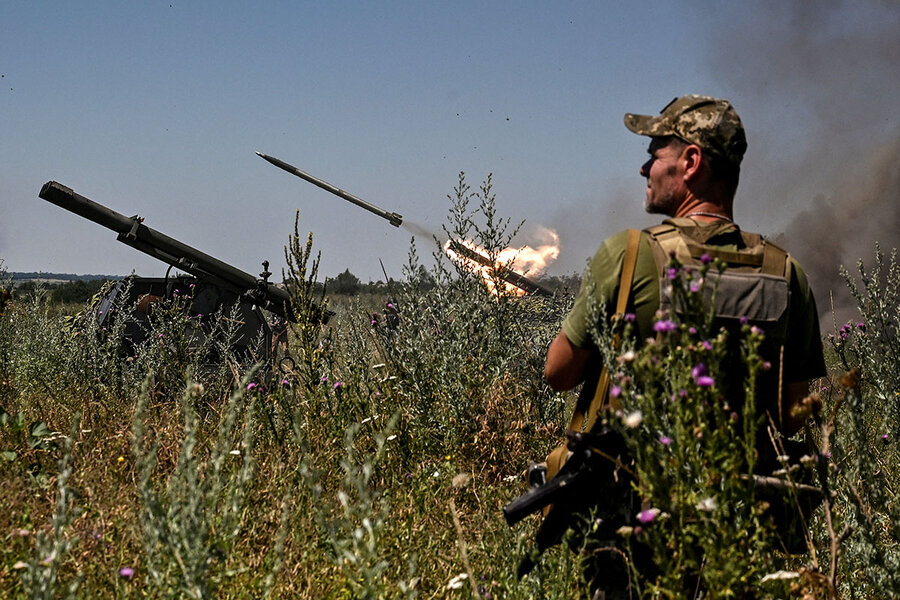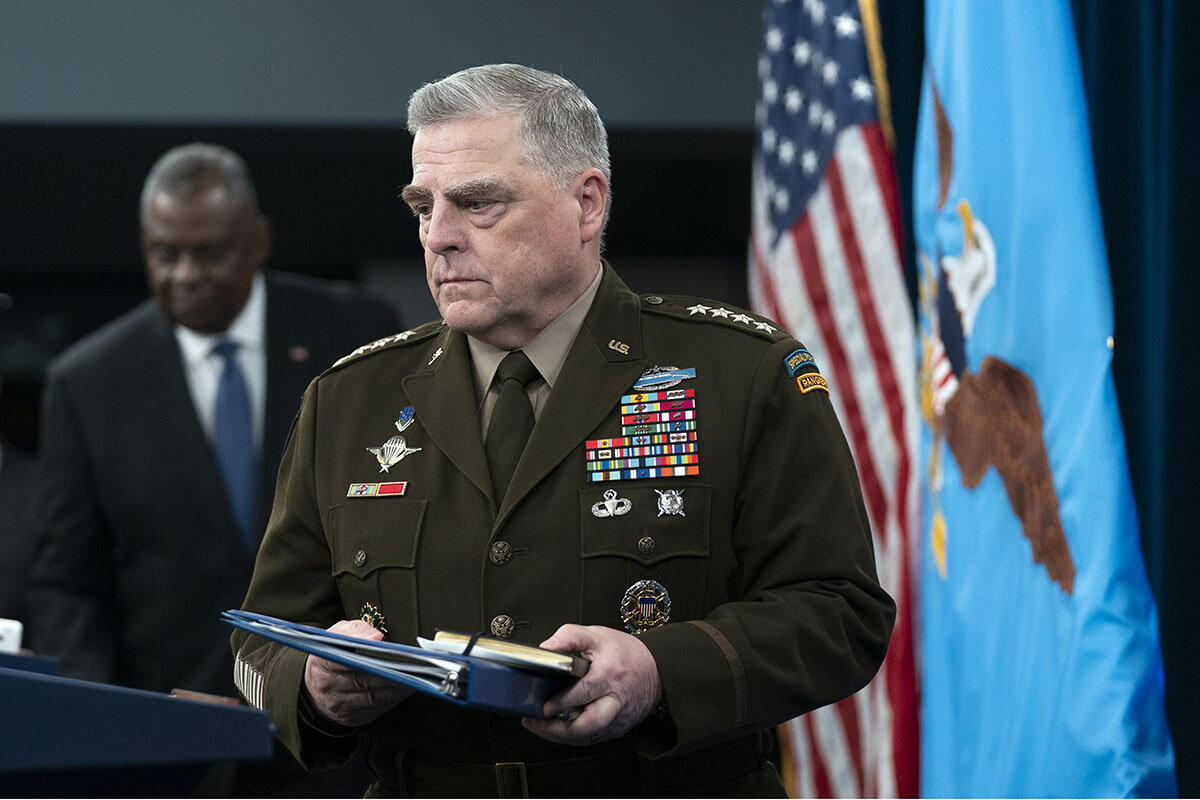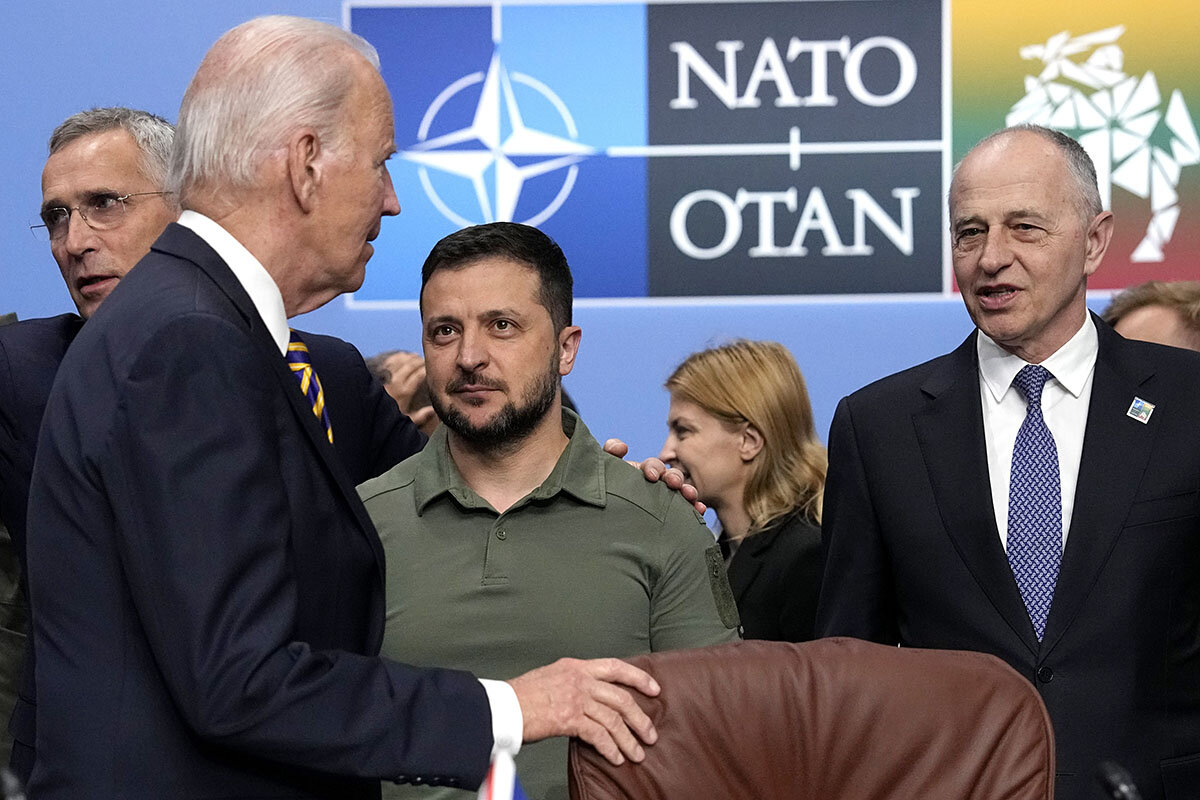Not too early to think ‘what next?’ if Ukraine offensive fails
Loading...
| Washington
Last fall, it took four weeks for Ukraine to liberate more than 4,500 square miles of territory outside the eastern city of Kharkiv.
Farther south, a simultaneous campaign took two and a half months to free the regional capital of Kherson, the only such city Russia had captured in the war.
Since June, Ukraine has been fighting its latest, largest counteroffensive. With both sides suffering heavy casualties, it’s only retaken about 100 square miles so far. The attritional warfare is challenging Ukraine’s armed forces and its allies, as well. If the effort fails, say military analysts, that could lead to a shift in priorities for its Western supporters – away from future offenses and toward Ukraine’s long-term defense.
Why We Wrote This
Ukraine’s summer offensive to retake lost territory is going slowly. Military experts say Western allies need to consider the possibility of failure – and perhaps focus on the defense of Ukraine.
“What that kind of a goal would do is make sure ... as much as possible that the Russians can’t retake territory yet again,” says Seth Jones, director of the International Security Program at the Center for Strategic and International Studies, a think tank in Washington.
This summer’s offensive was widely seen as the best chance to claw back territory from the Russians.
In the six months leading up to it, Ukraine’s Western supporters had sent new capabilities: tanks, infantry fighting vehicles, some long-range missiles. At the same time, they began quickly training new brigades – amounting to 63,000 troops – in Western-style tactics.
The weaknesses of Russia’s military had been on display for more than a year. With Western training and equipment, the logic went, Ukraine might be able to exploit that fragility further.
“That doesn’t mean we thought this was going to be the turning point,” says Eric Green, who led the National Security Council’s Russia desk until this April.
Indeed, war in real life doesn’t often resemble war on paper.
When Ukraine launched its initial assault in early June, it met almost 20-mile-thick Russian defensive lines, layered with minefields, trenches, artillery, and enemy troops. Those defenses – particularly the minefields – have inflicted most of Ukraine’s casualties in this counteroffensive so far, said Chairman of the Joint Chiefs of Staff Mark Milley, at a Pentagon press conference last Tuesday.
“They are slowly and deliberately and steadily working their way through all these minefields,” General Milley said. “It’s a tough fight.”
In fact, this summer’s counteroffensive has looked a lot like Ukraine’s forward fighting efforts since the war began. It’s slow. And it’s costly, in casualties and equipment.
To many analysts in Washington, that means advantage Russia, which has more artillery, more soldiers, and the easier task of defending territory rather than taking it.
“I don’t think there are any illusions among the Ukrainians that they can win in any meaningful way with an attrition approach,” says Dr. Jones.
Counteroffensive in middle phase
Attritional warfare hasn’t always favored Russia.
This counteroffensive has drawn some more optimistic comparisons to the one in Kherson last year, which involved steadily eroding Russian lines.
With that in mind, the actual change of territory may be a lagging indicator of Ukraine’s success so far, says Michael Kofman, a military analyst with the Carnegie Endowment for International Peace. What may be more important is the state of Russia’s defenses and the capacity for Ukraine to exploit a break in them.
“The Russian lines can bear a lot of strain until they can’t,” says Dara Massicot, an expert on Russian defense issues at the RAND Corporation. “The problem is that right now they’ve constructed their defensive position precisely to prevent Ukraine from” breaking through.
The counteroffensive is still in its middle phase, and may last into the fall now that the United States is sending Ukraine cluster munitions, which will help prevent an artillery shortage. Ukraine reportedly paused its counteroffensive and changed its approach after heavy losses in the first two weeks. In recent days it's reached beyond the battle lines with drone strikes on Crimea and Moscow. It may still produce significant gains.
Regardless, some experts counsel that the counteroffensive is not an audition.
“We need to depart from seeing the counteroffensive as the definitive moment that will determine what happens next,” says Yuriy Sak, an advisor to Ukraine’s minister of defense.
Three more Ukrainian brigades are being trained in Germany right now, said Defense Secretary Lloyd Austin at the same press conference last Tuesday. The Pentagon that day announced a $1.3 billion aid package – most of which will arrive after the counteroffensive ends.
What if counteroffensive fails?
The recent NATO summit in Vilnius, Lithuania, didn’t result in a clear pathway for Ukraine into the alliance. But it was a reminder that its security remains an extended priority for the allies.
If this counteroffensive stalls, Ukraine likely won’t be able to mount another one until next spring, given the weather and time it would take to recover from attrition. By that time Russia would have had even more time to harden its defenses.
The Kremlin’s projected budgets will increase funding for national security – or holding on to territory – more than they will for the military – which would be required to take territory. That doesn’t mean the front lines would be frozen, or that Russia isn’t interested in taking more Ukrainian land. But the lines would be harder to thaw.
Hence, says Mr. Kofman, the countries supporting Ukraine need to think about what happens after the counteroffensive.
“Whether successful or not this offensive was not going to decide the war and it wasn’t going to end it either,” says Mr. Kofman. “This has been a long war. It is going to be a long war.”








